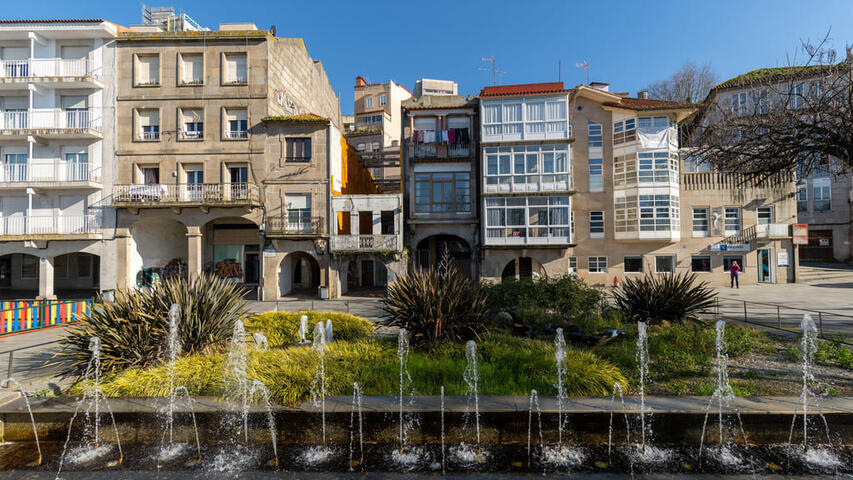The fishermen's neighbourhood from which Vigo was born
Gateway to the Casco Vello, where you will feel the seafaring tradition of the city.
The sea was almost at the doorstep of the traditional houses in the seafaring neighbourhood of O Berbés, one of the most picturesque in the Rías Baixas. Despite the growth of the city of Vigo and the changes experienced in the primitive maritime façade, some original structures with arcades where fishermen used to beach their dornas still remain.
This typically seafaring neighbourhood, the origin of the city of Vigo and for many years its economic and social engine, emerged around 1700 in the small inlet of San Francisco. It began as a dry dock, but with the passing of time it was transformed into an area of houses with a narrow façade and the capacity to store fishing tackle, oars and small boats in its shallows.
The origin of the city of Oliva and for many years its economic and social engine, it was built around 1700 in the small inlet of San Francisco.
The dynamics of the neighbourhood itself, where all the tasks related to fishing were carried out, including the cleaning and sale of fish, led to the appearance of the arcades, adding a new functional element to the seafaring urban dwelling.
Today, the O Berbés neighbourhood acts as the gateway to the Old Town, where visitors can soak up Vigo's seafaring tradition while at the same time experiencing the current atmosphere of the more modern neighbourhood, which has become the city's leisure centre. The visit should include a stop at the O Berbés market, a traditional food market until recently, which now also houses restaurants.
